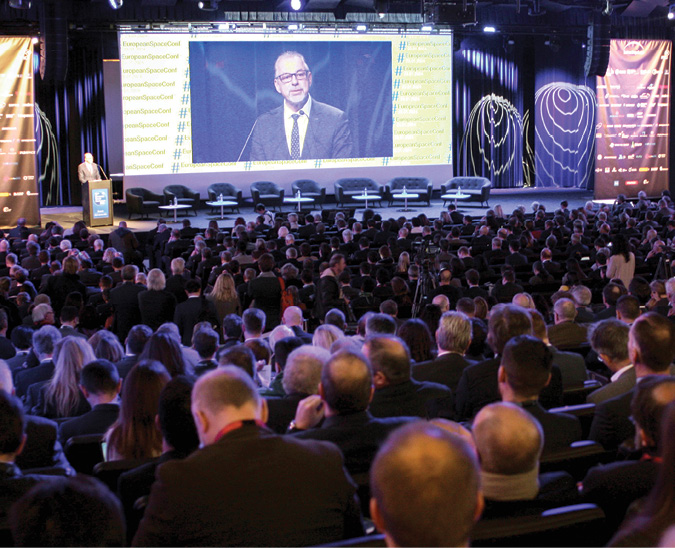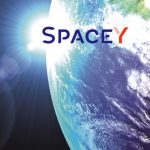This year’s European Space Policy Conference in Brussels saw familiar faces talking about new and unfamiliar things. While Galileo continues to perform well, delivering an ever-widening range of services, the problem of how to get Galileo satellites into space has forced the Union to take unprecedented, forward-thinking and, for some, uncomfortable steps.
Relief or resignation, reprieve or reprobation, flexibility, adaptability or surrender. These and other words spring to mind as the European Union (EU) works out how to represent its arrangement to launch Galileo satellites onboard a very non-European SpaceX launcher.
Thierry Breton, EU Commissioner for Internal Market, started the 2024 edition of the European Space Policy Conference on a familiar note: “We face many crises,” he said. Indeed, recent years have seen a veritable multitude of new and unusual crises causing dismay and consternation on all fronts: financial, biodiversity, climate, COVID, climate again, Ukraine, others, and now Palestine. And then a lot can be accomplished in a crisis. In 2020, one prominent EU Commissioner reminded industrial stakeholders that, “in every crisis, there is an opportunity.” Crises can make necessary and legitimate the changing of tack, the passing of extraordinary measures and the making of exceptions.
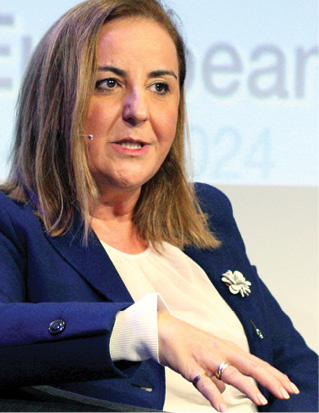
“We have Ukraine and we have others,” Breton said, “which require bold responses. With the current geopolitical situation, with regard to access to space, we have to be honest, Europe is facing an unprecedented crisis. We have lost our independent access to space, putting at risk the sovereign deployment of the Union flagships, Galileo, Copernicus and soon Iris Squared [IRIS²].”
For years, this “independent access to space” has been put forward as one of the EU’s core principles. Yet, the Union somehow chose to depend on Russia for said independent access, for critical launch services and technologies.
Director-General of the European Space Agency (ESA) Josef Aschbacher agreed with Breton’s assessment. “We are entering a full-blown launcher crisis,” he said. “The absence of Soyuz due to the war in Ukraine, but also technical delays of Ariane 6 and Vega C, have left Europe in an unacceptable situation, without access to space.”
“We know that we are now in a situation which is far more difficult than expected,” said Stephane Israel, CEO of Arianespace, the company that builds the Ariane and Vega launchers. “What we call the transition [from Ariane 5 to Ariane 6 and Vega C] did not go as planned, for many reasons. But, at the end of the day, what puts so much pressure on the system is the stoppage of Soyuz. Soyuz was supposed to be the backup, in case Ariane 6 was late, in case of difficulties with Vega C, and for geopolitical reasons that we are not responsible for, it has stopped, very brutally.”
“Regaining our sovereignty in terms of access to space is paramount,” Breton said, “if the Union is to remain credible as a space actor. Of course, Ariane 6 and Vega C will remain our baseline when they are ready.” For now, then, the new principle for European launcher policy becomes, in Breton’s words, “clear European preference.”
Ekaterini Kavvada, director for Secure and Connected Space, DG DEFIS, European Commission, hammered the message home: “Autonomy is of utmost importance. There is no assertive space power without it, autonomy in terms of technologies and autonomy in terms of access to space.”
Europe Turns to SpaceX
The turmoil around the European launcher crisis has been mounting for some time. Since the breakdown of EU-Russia relations in 2022, no fewer than 10 brand-new Galileo satellites have accumulated on the ground, ready for service and waiting for a ride into space. An extraordinary announcement came in November 2023; the EU made the move it had avoided for so long. It agreed to a deal with an American company to launch its Galileo satellites.
Space Exploration Technologies, better known as SpaceX, is, of course, the American transportation startup founded by Elon Musk that designs, manufactures and launches advanced rockets and spacecraft. The company is now set to carry two Galileo satellites into orbit in 2024 onboard its Falcon 9 launcher. The Union can be given a good deal of credit for its decision to work with SpaceX. By setting aside the long-standing principle of independent access to space, a principle that it had not strictly adhered to in any case, it has shown itself to be supple and pragmatic. It will get its satellites into orbit and move forward, and that should be a relief to everyone.
A European Commission spokesperson told Inside GNSS, “For the deployment and replenishment of Union space flagships, it is essential for the Union to have autonomous, secure and cost-efficient capacity to access space. As program manager of the EU Space Program, the European Commission has the obligation to ensure service continuity and high-level performance of all Union space flagships: Galileo, Copernicus and, in the future, IRIS².
“Ariane 6 is the baseline launcher for Galileo. Since the cancellation of launch services of Ariane 5 and Soyuz from the French Guyana spaceport, Europe must temporarily rely on non-EU launchers to ensure the programmatic needs of strategic infrastructures like Galileo. Due to this temporary unavailability of EU launch vehicles and in order to ensure continuity of Galileo services, the next four Galileo satellites are planned to be launched in 2024 on the Space X Falcon 9 launcher, two satellites per launch.
“The first launch window is foreseen for April 2024. This is, however, subject to an EU-U.S. Security Agreement currently being finalized. The first launch of Galileo satellites with an Ariane 6 launcher is planned in 2025 pending a successful maiden flight of Ariane 6 in 2024.”
The security agreement is to ensure, among other things, that European engineers have round-the-clock access to Galileo satellites and the right to retrieve technology should a launch fail and a payload be lost at sea.
Back at the conference, Arianespace’s Israel said, “The good news is that ‘24 will be the year of the comeback of European launchers. Ariane 6 will fly this summer, Vega C back on track by the end of the year. SpaceX, the elephant in the room, is not a problem only for launchers. SpaceX has put thousands of satellites into orbit and is putting under pressure the whole value chain, launchers for sure.”
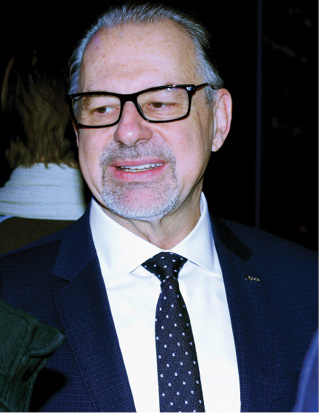
Musk Matters
In recent years, the EU has clashed with Musk over the question of freedom of expression, the Union having called on him, to greater or lesser effect, to exert tighter controls over activity on his online media platform X (formerly Twitter). Under the EU’s Digital Service Act, passed in the wake of the COVID crisis, the Union has introduced stricter-than-ever rules about what can and cannot be posted online. The fact that Musk’s SpaceX has, at least temporarily, become indispensible to the Union’s space program will no doubt be irksome to some EU officials who see Musk as a sometimes-less-than-obliging actor.
At the space conference, a rather pertinent session moderator asked the panel discussing European access to space whether Europe needs its own highfalutin, massively ambitious firebrand, i.e. its own Elon Musk.
ESA’s Aschbacher said, “Europe has its champions. In space we have our champions, but also in other domains.” He did not name any. “Europe is capable of developing very important industries. We’ve done it in the car industry for many decades. I think Elon Musk comes from South Africa, and he had a choice of going to Europe or to Canada or to the U.S. He went to the U.S. because there he found a very fertile ground, and conditions where he could invest and start a company. This is where Europe has work to do, in providing such conditions.”
Jean Marc Nasr, executive vice president Space Systems, Airbus Defense and Space, said, “We don’t need an Elon Musk in Europe. It’s not a good model. NASA externalized its operations to SpaceX at some point, with very great success, a fantastic job in this context. This is for the U.S. Now, NASA has come to us to do the next ISS [International Space Station]. They came to us. We are European, we can do it. We have all the ingredients to make it happen.
“What we are missing is a framework. We are not consistent in our industrial voice. In the U.S. they have an industrial policy, a very clear one, a very good one. I’ve been there, I’ve seen it. In Europe we don’t have this yet. We have in France a French industrial policy. We have a German one in Germany, we have one in Spain. Italy is getting there, but do we have a European view of it? Not yet. There is an effort to be made in focusing our efforts, aligning the strengths of each and every nation.”
Kavvada warned against attempting to adopt the U.S. model in Europe: “From an industrial point of view, the SpaceX model is translated as a verticalization, from A to Z. I don’t think this is the right model for European industry. One company, doing everything by itself, even if it’s the best one, long term, will not really contribute to the project.”
“There are many things to take from the U.S. model,” Israel said, “in terms of innovation, of this culture, but I think we all agree a pure copy-paste is not possible, because we do not have the same level of public money, nor the same access to private money. We need our own way in space.
“A real difference in terms of European DNA is that we want a sustainable space, and to be honest, the guy you have mentioned cares absolutely nothing about sustainable space. The way he organizes access to space is more going in another direction.”
To wrap up the Arianespace side of the story, we spoke to Israel after the session. He confirmed his company is positive about the way forward. About the new 2024 window for an Ariane 6 maiden flight, he said, “Yes, definitely, I think we have a real confidence. It’s really feasible and we will do it. There are still some milestones ahead of us, but what was done last year, with the successful combined tests, gives us confidence. So, what we say openly is what we really think. We want to make two Ariane 6 [launches] this year and, after that, ‘25 should be the year of the return of Ariane 6 for Galileo.”
About the SpaceX deal, he said, “For the reasons we all know, there was no accessible European solution. That’s just life. For us now the priority is continuity of the service, this is what matters for the European Commission and ESA, and it is fully understood. What is important is that when Arianespace is back, we will have the confidence of ESA and the European Commission. Of that I have no doubt.”
Onward to 2040
ESA Director-General Josef Aschbacher talked about ESA’s new 2040 strategy: “2040 may seem like a long time into the future, 16 years from now, but consider what has happened in the space business since 16 years ago.”
In 2008, SpaceX successfully flew its Falcon 1 launcher for the first time, making it the first privately developed, fully liquid-fueled launch vehicle to orbit the Earth. “SpaceX was on the brink of bankruptcy at that time,” Aschbacher said, “and today we know it’s the largest space company in the world.”
On the public sector side, he said, “In 2008, China was in the very early stages of building up its space program, since then it has expanded in all dimensions – satellites, astronauts, navigation and others.”
Preference Makes Perfect
So, Europe will bring Galileo back to Ariane 6, as it prefers, in 2025, but in the longer run, the Union’s options may not be so clear and simple. For Europe to be able to choose a European launch service, there has to be a European launch service for it to choose. Arianespace, if not some other European company, will have to be there, earning its bread, surviving, in a burgeoning, globalizing, new space market, hungry competitors to right, left and center. No one knows for sure who first said, “No bucks, no Buck Rogers,” but it was probably an American. And it remains true today, even in Europe. Can a big old company like Arianespace match the performance of young, brash startups like SpaceX, on their own terms?
“We need to improve the competitiveness of our industrial ecosystem,” Kavvada said, “both legacy and startups. We need to mobilize investment.” Breton spoke about 10 billion euros for European space needing to come from the private sector in the next five years, with the public sector and ESA only able to reinforce this input.
“There is no way to talk about space if we don’t have a competitive industrial ecosystem that would go beyond the domestic European market,” Kavvada said. “In order to ensure the sustainability of this theater, you will need a critical mass of demand. So, it’s time for these space companies to think about the downstream, about all the services and applications that they can reach in each and every sector of the economy, all the businesses that could be served by space activities. If we expect to grow the European space industry only from the DG DEFIS budget or that of the European Space Agency, I think this is a utopia.”
Aschbacher approved the sentiment: “Without a competitive industry we aren’t going anywhere,” he said. “Industry needs projects and programs. We need a joint plan of priorities and actions. Are we looking to become a big space power like the U.S.? Of course we have ambitions, though our means are more modest. But we have to wake up, step up, and make space an integral part of all levels of society, from pharmaceuticals to agriculture, the car industry and so on.”
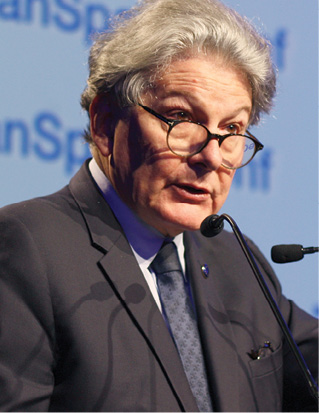
Still, Galileo Goes
At the space and transport session, the venerable and still twinkle-eyed former ESA Director General Jean-Jacques Dordain reminisced with the equally spry Matthias Reute, former European Commission director general for Energy and Transport and coordinator of the European Rail Traffic Management System. Reute cited safety, efficiency, automation and passenger comfort as the key buzzwords for modern rail transport.
Rodrigo da Costa, executive director of the European Union Agency for the Space Program (EUSPA), the agency that is tasked with delivering Galileo and EGNOS services, said, “The transport sector in general is a very large market for us. Yesterday, we published our updated EUSPA market report, with many, many sectors being the focus, and once again it shows the transport sectors as very prominent.”
Andreas Boschen, executive director of the EU Single European Sky ATM Research (SESAR) joint undertaking reminded participants of the widespread and critical use of EGNOS, Europe’s GNSS augmentation system, in European aviation. He mentioned some very interesting, emerging air transport technologies that need space-based services to fly: “We are integrating drones, new entrants, air taxis, eVTOLs, as we are calling them, and there also we need satellite technology, GNSS, to ensure strategic separation. One of the things we are using is geofences, where the airspace regulator can define a certain airspace, and, by means of GNSS positioning, can also enforce it, to make sure that around certain events, around critical infrastructure, urban, densely populated areas, there are no-fly zones, where drones can definitely not go.”
“Drones indeed represent an area that is developing very quickly,” da Costa said. “They are a sector per se but they are also tools that enable many other sectors. We see, for example, the utilization of drones using satellite data in the monitoring of solar power plants.”
In road transport, he said, the power of the Union is in full flexion. Based on an EU regulation in force since 2015, the Galileo-based eCall system, now installed in European cars, automatically makes a 112 emergency call when the vehicle is involved in a serious road accident. An EU mandate requires all newly homologated cars sold in the Union to be equipped with the eCall capability, and, by extension, with Galileo-enabled GNSS.
Galileo OSNMA Coming Soon
Between October 2023 and January 2024, the Galileo program published all the information necessary to build operational OSNMA receivers, including guidelines, test vectors, public cryptographic material to be installed in receivers, and an update to the SIS ICD.
All of this allows users and receiver manufacturers to finalize the implementation of the OSNMA protocol in advance of the official launch of initial services.
Meanwhile, the OSNMA signal in space is already being transmitted worldwide, demonstrating very good performance. The European Commission is currently finalizing formal service validation and expects to launch the initial service operationally in March 2024.
The Offer That Can’t Be Refused
“With the implementation of the eCall regulation,” da Costa said, “suddenly all cars have become equipped with Galileo, so today there is really no option.” There are other applications now using Galileo as per regulation. The mandated and Galileo-based smart tachograph records the activity of professional drivers, including strictly controlled resting and driving hours. It then provides this information to EU regulatory authorities. “Other regulation-based applications for Galileo are coming,” da Costa said.
The High Accuracy Service (HAS), now a year old, and the Open Service Navigation Message Authentication (OSNMA) service will continue to grow the Galileo user base. “HAS will be important for more and more applications as we look, for example, to more autonomous ways of driving,” da Costa said.
In maritime transport, Galileo is now being used for navigating in ports. “With HAS, in-port navigation becomes more and more a reality,” da Costa said, “and in the coming weeks, in early 2024, we will have the EGNOS Maritime Service, which will contribute to safety. Finally, in rail transport, we see European GNSS being used to increase efficiency in the management of wagons and the displacement of vehicles, although there is potential for more.”
No one must imagine, then, that EUSPA officials are lazing about, even as its next-in-line satellites sit idle on the ground. With defense and security increasingly on the EU space radar, EUSPA has strengthened, and will continue to strengthen over the course of 2024, its operational links with the EU External Action Service (EEAS), the body that carries out the EU’s Common Foreign and Security Policy. EUSPA is also directing more attention to the security of the European GNSS systems themselves.
“The first step is to understand what that means,” da Costa said. “What are the threats and the menaces that are out there, that can directly affect our GNSS assets? We now have in place, working together with ESA, systems to protect Galileo, and last year we began looking into EGNOS, how we can better monitor the security of EGNOS in order to protect that system. There is a lot of work going on in the Galileo program right now, technical work, to make it more robust and more secure, so we can continue to deliver the governmental services that the Union and member states expect, services crucial to our sovereignty, for our economy and our ability to create value.

